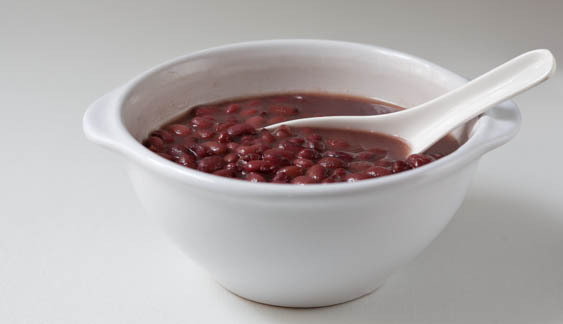Slow-Cooked Purple Cape Beans

introduction
We introduce this recipe for Purple Cape Beans to accompany a chili we’ve developed. But Purple Cape Beans don’t need chili to beef up their bonafides—they’ve got an historic pedigree and captivating taste all on their own, thank you very much. If you asked them, they’d probably say they prefer not to be swallowed up by a big pot of stew anyway.
There are so many ways to serve these simple beans. Rice may well be their first preference. But on a pedestrian level, they’re terrific with eggs or simply mashed onto a thick slice of buttered toast with or without a strip or two of bacon for company. They provide excellent cushioning for pan-seared fish and they cavort happily with braised root vegetables or greens. They also like a bit of lamb or game. If you’ve made our chili, nibble Purple Cape Beans on the side or drift them on the top and eat the two together.
Our basic approach was to give them a nudge of encouragement and get out of the way.
Cooking Remarks
We cooked these beans straightaway without soaking and also after an overnight soak to get a sense of how each method would impact the final taste and texture of the beans. There was no palpable difference except in time spent on the stove—1¼ to 1½ hours if soaked, 2½ hours if unsoaked. The key is a whisper simmer and regular ministrations with a wooden spoon.
equipment mise en place
For this recipe, you will need a heavy-bottomed 3-quart saucepan and a wooden spoon.
-
-
3cups spring or filtered water
-
7ounces (1 cup) Anson Mills Purple Cape Beans, covered with water, soaked overnight in the refrigerator, and then drained
-
½yellow onion, peeled, cut through root end, and layers left intact
-
½carrot, peeled
-
2small inner celery ribs, leaves attached
-
2large garlic cloves, peeled and halved
-
1small Turkish bay leaf
-
½teaspoon red pepper flakes, or to taste
-
Fine sea salt
-
3tablespoons of a young, fruit-forward red wine (we used Gigondas)
-
-
Bring the water to a simmer over medium-high heat in heavy-bottomed 3-quart saucepan. Stir in the beans, the onion, carrot, celery, garlic, and bay leaf. Return the liquid to a simmer, and then reduce the heat to low. Cover the pan partially and simmer very gently, stirring occasionally, until the beans are tender and what liquid remains in the pan has thickened slightly, 1¼ to 1½ hours. (If the beans were not soaked, they will require about 2½ hours to become tender; add hot water as needed during simmering to keep the beans just moistened.)
-
Remove and discard the vegetables and bay leaf. Season the beans with the red pepper flakes and salt to taste. Stir in the wine and cook over medium heat until just heated through and the raw taste of wine is gone. Taste for seasoning and serve hot.